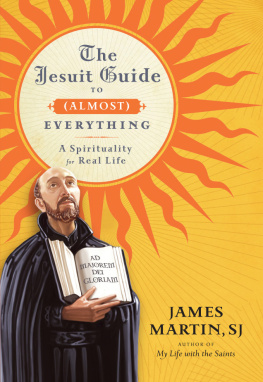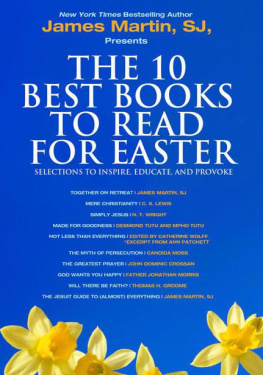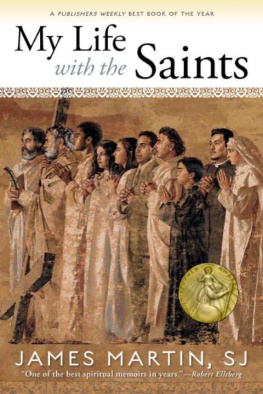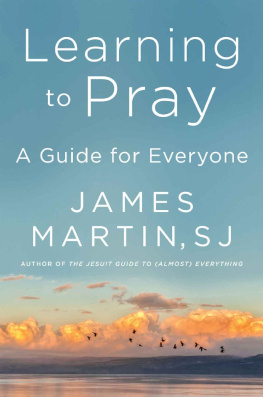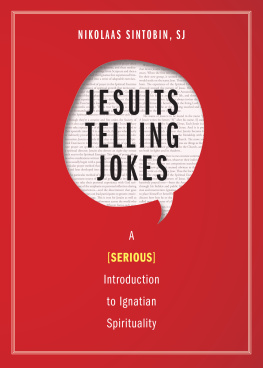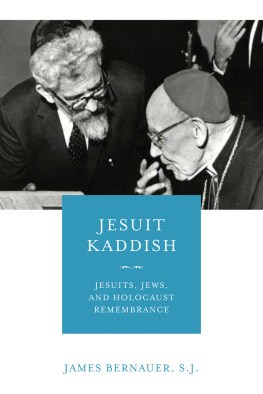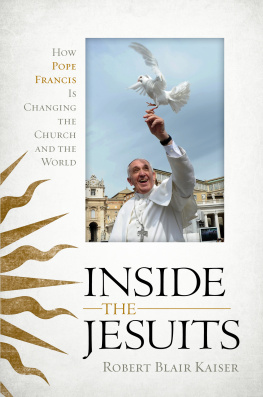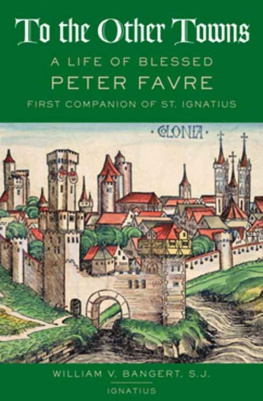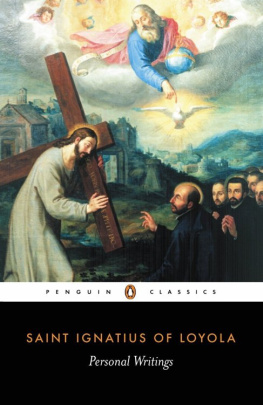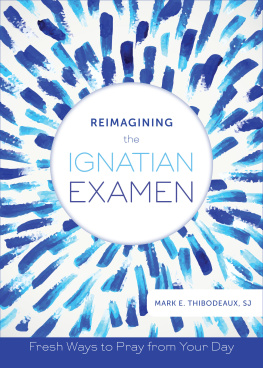What Is Ignatian Spirituality?
W HO IS S T. I GNATIUS Loyola, and why should you care?
The short answer is this: St. Ignatius Loyola was a sixteenth-century soldier-turned-mystic who founded a Catholic religious order called the Society of Jesus, also known as the Jesuits. And you should care (or, more politely, youll be interested to know about him) because his way of life has helped millions of people discover joy, peace, and freedom and, not incidentally, experience God in their daily lives.
St. Ignatiuss way of proceeding, to use one of his favorite expressions, has led people to more fulfilling lives for over 450 years. All in all, not a bad record.
The way of Ignatius is about finding freedom: the freedom to become the person youre meant to be, to love and to accept love, to make good decisions, and to experience the beauty of creation and the mystery of Gods love. Its based on an approach found in his own writings as well as in the traditions, practices, and spiritual know-how passed down by Jesuit priests and brothers from generation to generation.
While these traditions, practices, and spiritual know-how have guided members of the Jesuit Order since its founding in 1540, Ignatius wanted his methods to be available to everyone, not just Jesuits. From the first days of his Order, Ignatius encouraged Jesuits to share these insights not only with other priests, brothers, and sisters, but also with lay men and women. Ignatian spirituality was intended for the widest possible audience of believers and seekers.
Maybe its good to ask another question before we go on: what is a spirituality?
In brief, a spirituality is a way of living in relationship with God. Within the Christian tradition, all spiritualities, no matter what their origins, have the same focusthe desire for union with God, an emphasis on love and charity, and a belief in Jesus as the Son of God.
But each spirituality emphasizes different aspects of the traditionone accents the contemplative life, another the active life. This one emphasizes joy, this one freedom, this one awareness, this one sacrifice, this one service to the poor. All these emphases are important in every Christian spirituality, but they are highlighted differently by each spiritual school.
Practical Jesuits
Jesuits take their cue from Ignatius in terms of a practical spirituality. One joke has a Franciscan, a Dominican, and a Jesuit celebrating Mass together when the lights suddenly go out in the church. The Franciscan praises the chance to live more simply. The Dominican gives a learned homily on how God brings light to the world. The Jesuit goes to the basement to fix the fuses.
In his book The Jesuits: Their Spiritual Doctrine and Practice, first published in 1964, which I read during my first few weeks as a Jesuit, Joseph de Guibert, a French Jesuit, offers a charming analogy first made in the Middle Ages.
A spirituality is like a bridge. Every bridge does pretty much the same thinggets you from one place to another, sometimes over perilous ground, or a river, or great heights. But they do so in different ways. They might be built of rope, wood, bricks, stone or steel; as arches, cantilevers, or suspension bridges. Hence, writes Father de Guibert, there will be a series of different types, with each one having its advantages and disadvantages. Each type is adaptable to given terrains and contours and not to others; yet each one in its own way achieves the common purposeto provide a passage by means of an organic, balanced combination of materials and shapes.
Every spirituality offers you a distinctive passage to God.
Many of the most well-known spiritualities in the Christian tradition flow from the religious orders: Benedictines, Franciscans, Carmelites, Cistercians. Each order has developed, over the centuries, its own spiritual traditions, some directly handed down by its founder, others that come by meditating on the life and practices of the founder. Today members of those religious orders live out what Father de Guibert calls a family tradition.
Spend time with a few Franciscans, for example, and youll quickly notice their love of the poor and the environment, a passion shared by their founder, St. Francis of Assisi. Live for a few days in a Benedictine community, and you will soon taste their expansive, welcoming spirit, passed down from St. Benedictnot a surprise for someone who said, All guests should be welcomed as Christ. Religious orders call this the charism, or founding spirit, passed on by the founder. (Charism comes from the Latin word for gift.)
Likewise, spend time with a Jesuit priest or brother, and you will begin to experience the distinctive spirituality of St. Ignatius Loyola and the Jesuit Order, which well soon describe. The sum total of the practices, methods, emphases, accents, and highlights of the Christian way of life that comes to us from Ignatius is known as Ignatian spirituality.
That spirituality has helped the Society of Jesus do some remarkable things in its colorful history. Its impossible for me to talk about Jesuit accomplishments without sounding too proud (something were accused of daily), so Ill let the English historian Jonathan Wright do so instead. This thumbnail sketch is from his marvelous book Gods Soldiers: Adventure, Politics, Intrigue, and PowerA History of the Jesuits:
They have been urbane courtiers in Paris, Peking, and Prague, telling kings when to marry, when and how to go to war, serving as astronomers to Chinese emperors or as chaplains to Japanese armies invading Korea. As might be expected, they have dispensed sacraments and homilies, and they have provided educations to men as various as Voltaire, Castro, Hitchcock, and Joyce. But they have also been sheep farmers in Quito, hacienda owners in Mexico, wine growers in Australia, and plantation owners in the antebellum United States. The Society would flourish in the worlds of letters, the arts, music, and science, theorizing about dance, disease, and the laws of electricity and optics. Jesuits would grapple with the challenges of Copernicus, Descartes, and Newton, and thirty-five craters on the surface of the moon would be named for Jesuit scientists.
In the United States, Jesuits are probably best known as educators, currently running twenty-eight colleges and universities (including Georgetown, Fordham, Boston College, and every college named Loyola) and dozens of high schools and, more recently, middle schools in the inner city.
Since Ignatius wanted his Jesuits to be practical men who could speak to people clearly, its not surprising that over the years Jesuits have boiled down their spirituality into a few easy-to-remember phrases. No single definition captures the richness of the tradition, but together the phrases provide an introduction to the way of Ignatius. So here are four simple ways of understanding Ignatian spirituality. Think of them as the arches under that bridge we talked about.
F OUR W AYS
There used to be a saying that Jesuit training was so regimented that if you asked five Jesuits from around the world the same question, you would get the same answer from all five. These days Jesuits are a more independent bunch, and you would probably get five different answers. Or six. The Italian Jesuits have a saying, Tre gesuiti, quattro opinioni! Three Jesuits, four opinions!
But theres one question that would elicit a similar answer from those five hypothetical Jesuits. If asked to define Ignatian spirituality, the first thing out of their mouths would most likely be finding God in all things.
That deceptively simple phrase was once considered revolutionary. It means that nothing is considered outside the purview of the spiritual life. Ignatian spirituality is not confined within the walls of a church. Its not a spirituality that considers only religious topics, like prayer and sacred texts, as part of a persons spiritual life.

